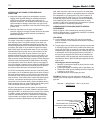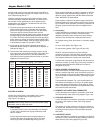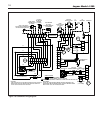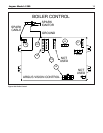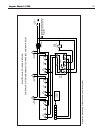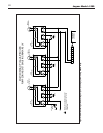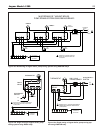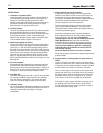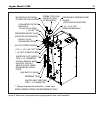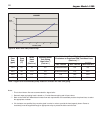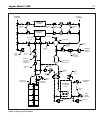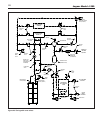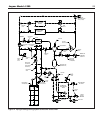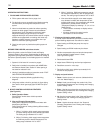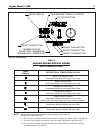
Jaguar Model J-390
24
WATER PIPING
1. Connection of system to boiler:
P
rimary/secondary piping of the system is recommended, to
e
nsure the proper flow through the boiler. (See Figures 19
through 21). The boiler loop piping must be the same
diameter as the water outlet (supply) and inlet (return) piping
connections provided on the boiler, particularly on longer
loops. See page 2 for piping connection size.
2. Circulator Pumps:
The boiler loop piping must utilize the Taco 1400-20 circulator
t
hat is supplied with the boiler, to ensure the proper flow
t
hrough the boiler. Refer to Figure 18 for the boiler water side
pressure drop and Table 2 for the recommended pump
models for the domestic hot water system. Install the pumps
in the orientation shown in Figures 19 through 21.
3. Relief Valve(supplied with boiler):
Tee the relief valve into the boiler water outlet (supply) piping
as close to the water outlet (supply) connection as possible.
(See Figure 17). The relief valve’s discharge piping must be
the same size or larger than the relief valve’s outlet, and must
terminate 6” minimum from floor with a plain (no threads) end.
Place a bucket under pressure relief valve discharge. Make
sure discharge is always visible. DO NOT hard-pipe to drain
piping, or any place where freezing could occur. No shut-off
valve is permitted between the relief valve and boiler, or in the
discharge line.
4. Air Control System:
An appropriately sized diaphragm-type expansion tank must
be used to control the system pressure. See boiler volume
data on page 2, and the recommended location in Figures 19
through 21. An air vent is recommended to be installed on an
air separator in close proximity to the expansion tank.
5. Cold Water Fill:
A pressure reducing (fill) valve, with a shut-off valve upstream
of it, should be installed in close proximity of the expansion
tank. (See Figures 19 through 21). Use a back flow check
valve in the cold water supply as required by local codes.
6.
Low Water Cutoff:
On a hot water boiler installed abo
ve radiation level, the boiler
must be provided with a low water cutoff device at the time of
installation by the installer (see Figure 17 for piping
arrangement).
7. Water Treatment and Freeze Protection:
A good water treatment program will not only extend the
useful life of this boiler but it will also save much of the time
a
nd expense of repairs made necessary by preventable
o
ccurrences. A reputable water treatment company should be
consulted to evaluate and determine the best overall
treatment program for your boiler equipment.
The heat exchanger is made of aluminum, so the system
water must be maintained between 7.0 and 8.5 PH level.
T
horoughly flush the system, before connecting the boiler, to
r
emove any sediment or glycol.
Anti-freeze is sometimes used in hydronic systems to
protect against freeze-up in the event of power failure or
boiler shut down in the cold winter.
Use RhoGard
(Propyleneglycol with Pro-Tek 922 inhibitor) by Rhomar
Water Management, Inc.
Follow the manufacturer’s
instructions for proper application and proper mixture for
minim
um ambient temperature.
An
y use of anti-freeze
other than that supplied by Slant-Fin or specifically
approved and/or recommended for use by Slant-Fin
will void this warranty.
Never use Ethylene Glycol as it is toxic to humans.
Never use any types of automotive or standard gylcol freeze
protection fluids.
8. Piping a heating - cooling system to a water boiler and
chiller:
Figure 21 illustrates a method of piping a heating-cooling
system to a water boiler and a chiller. Hand valves (shown)
or automatic valves must be installed to prevent circulation
of chilled water in the boiler or hot water in the chiller.
The air control system and pressure control system must
operate with chiller only, or the boiler only, being valved to
the piping system. Separate control devices on the boiler
and chiller may be used, or a single set of air and pres-
sure controls on the common piping may be preferred.
If the boiler is used to supply hot water to heating coils in
air handling units, flow control valves or other devices
must be installed to prevent gravity circulation of water in
the coils during the cooling cycle.



